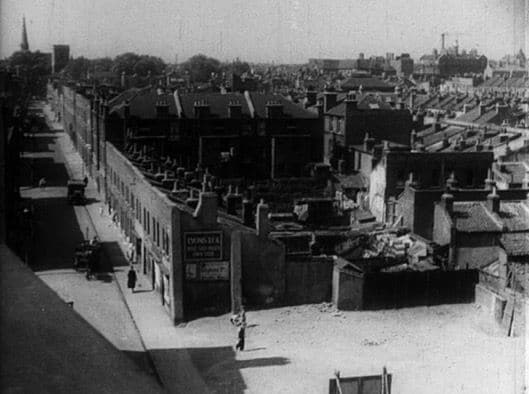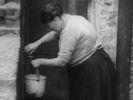Eye For Film >> Movies >> Housing Problems (1935) Film Review
Housing Problems
Reviewed by: Rebecca Naughten

During the 1930s, the burgeoning British documentary movement produced a series of films that addressed issues of social reform. Arthur Elton and Edgar Anstey's Housing Problems - an exploration of the dire living conditions experienced in British slums and the plans of local authorities to build better housing - is one of the best known from this subset. Although not a campaigning film - the problems were widely acknowledged and slum clearances were already underway - the film nonetheless takes what was, at the time, an original approach by looking at the issue through the personal experiences of the people directly effected.
The film is one of the first examples of vox populi and the presentation of ordinary people talking directly to the camera was innovative for the era. The slum-dweller interviewees were apparently given guidelines as to what they should talk about - we never hear the interviewer - but although sometimes stilted in their delivery, the unscripted responses and vernacular expressions ("the vermin in the walls - it's wicked") have the ring of authenticity.

The film accumulates moving testimony of genuine hardship - including the deaths of children - told with matter-of-fact stoicism. The British social code of avoiding outward displays of emotion makes it all the more affecting when you hear the catch in a woman's voice as she recounts waking to a rat crawling over her and her evident horror that she fled the room without picking up her baby.
Documentaries of the period were often sponsored by private industry and in this case the hand of the British Commercial Gas Association can be seen in overt references to the appliances and gas power that people could expect when they were moved to the new housing. The aims of the housing schemes seem admirable - with particular emphasis given to maximising natural light and open spaces. But, at the same time, the film can in no way be considered an advertisement for the sponsor - although we see scale models of planned developments and interviews with people who have already moved out of the slums, far more emphasis is given to the godawful catalogue of problems that made the slums unfit for human habitation.
One note of condescension creeps in when an official talks of the relocated slum dwellers making best efforts to keep their new homes 'nice' - as if hygiene awareness was being conferred upon them through the combination of benevolent local authorities and new buildings rather than something that was physically impossible in their former locations. But generally the tone is one of straightforward practicality - and most importantly it privileges the voices of those who had had little say in how they had lived to date.
Reviewed on: 19 Feb 2016















